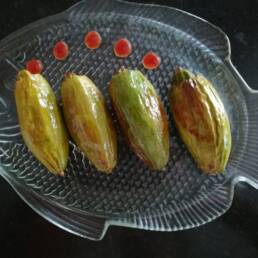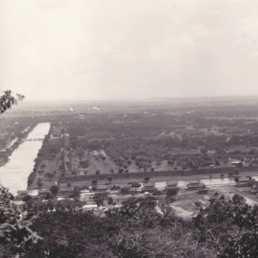When Burma fell to Imperial Japan in the summer of 1942, it made British Calcutta vulnerable to attacks by the Japanese air force. The city would soon come under intense attacks as feared but a new hero would step up. This is his story.
By April, 1942, Japanese fighters had ravaged Ceylon and Kankinada & Vizag. Calcutta was unaffected in April but on the cold night of Dec 20th, 1942, the defenceless city was raided by Japanese fighter jets.
A massive, gaping hole caused by a Japanese bomb opposite the Great Eastern Hotel served as a brutal reminder to the city’s population of the real & imminent danger. Another raid followed on Christmas Eve.
This time, significant damage and some loss of lives took place around Dalhousie Square with Mangoe Lane/Bentinck Street being the most affected areas. The residents of the city were in a state of panic. Thousands left for their residences in the upcountry.
The British War office rushed attachments of Hunters to defend the city and temporary airfields soon lined the city. The most famous of these was of course at Red Road. Anti-aircraft gun batteries were also installed. But the city still remained poorly defended.
The Beaufighter was a nighttime fighter that was armed to the teeth and perfectly suited for night defence of ground targets. The 89th squadron of RAF was in Egypt flying night missions on the Beaufighter. A detachment was rushed to Calcutta.
Around 12th Jan, 1943, eight Beaufighters arrived in Calcutta. Two days later, a new squadron, RAF no. 176, was raised in Dum Dum. The squadron chose an apt motto – Nocte Custodimus – We keep the night watch.
The rising star of 176 Squadron was Flt. Sgt. Maurice Pring. Barely 21, he had already seen heavy action in Malta and Egypt and was already credited with four confirmed and two probable “kills.”
Just a day after the squadron was raised, the Japanese were back. But this time, they were in for a surprise. Guided by ground radar and manned by experienced pilots, the Beaufighters were primed for the kill. Flt. Sgt. Pring intercepted and shot down 3 Japanese aircraft over Khulna, 70 kms from Calcutta.
Overnight, the mood in the city turned from fear to celebration. The very next day, Maurice Pring’s photo was featured on the front page of The Statesman. Pring was immediately awarded the Distinguished Flying Medal (DFM) by the RAF.
Soon, his boyish but handsome face adorned Royal Indian Air Force recruitment posters. Pring’s popularity in the city knew no bounds with the young officer being regularly invited to parties and shopkeepers offering him wares free of cost!
Meanwhile, destruction of 3 Japanese aircrafts by Australian flying ace Charles Crombie on the night of 19th Jan, 1943 led to the Japanese calling off air raids on Calcutta. In the interim, 176 Squadron was transferred to Baigachi.
On 5th Dec, 1943, the Japanese were back. And this time they came in broad daylight. 176 scrambled five Beaufighters. They were unaware of the fact that it was not a small posse but a huge combined raid by the Japanese air force and navy. The plane they were flying was distinctly unsuitable for day fights.
At 18000 feet, they were torn apart by the cannons of the Japanese “Zeroes” which raged down on them from higher altitude. Three planes, among them Pring’s, went down in flames. Only one of them: Pilot Officer A Whyte, managed to eject.
Five days later, F/O Maurice Pring’s damaged aircraft was finally located. The gallant officer had been badly burnt and his lifeless body lay in long grass little distance away from his plane. No trace of Flt. Lt. Halbeard, the other missing pilot and his plane was ever found.
Flying Officer Maurice Pring was laid to rest in the Commonwealth War Cemetery in Bhowanipore. He was only 22. The population of Calcutta, Europeans and Indians alike, grieved for the fallen hero in unison.
Source: https://www.bharat-rakshak.com/IAF/history/ww2/in-the-skies-of-calcutta/




